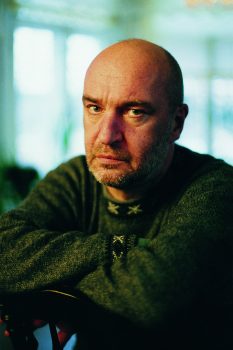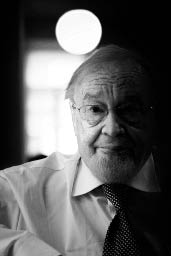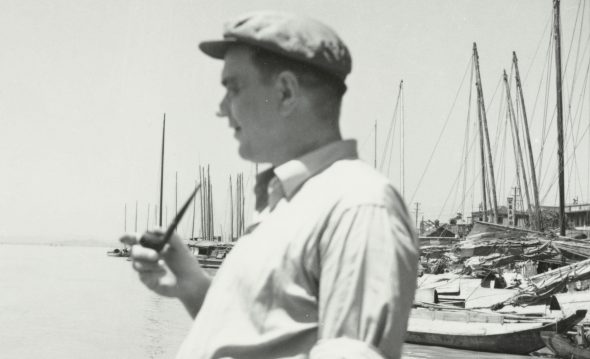Search results for "2011/04/2010/05/2009/10/writing-and-power"
Eeva-Kaarina Aronen: Kallorumpu [Skull drum]
23 December 2011 | Mini reviews, Reviews
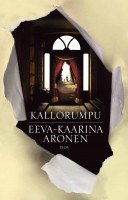 Kallorumpu
Kallorumpu
[Skull drum]
Helsinki: Teos, 2011. 390 p.
ISBN 978-951-851-413-1
€ 27.40, hardback
Eeva-Kaarina Aronen (born 1948) did not begin her writing career untill 2005, after a long career as editor of the newspaper Helsingin Sanomat. Her third novel Kallorumpu was shortlisted for the Finlandia Prize for Fiction 2011. Aronen’s interest in historical characters and themes that challenge historical truth was already evident in the of her first novel Maria Renforsin totuus (‘The truth of Maria Renfors’, Teos, 2005). At the centre of Kallorumpu is the legendary figure of Finland’s Field Marshal C.G. Mannerheim (1867–1951). The book concentrates on the description of one day in November 1935 by an old filmmaker, the narrator of the novel, who is showing his documentary to a small group of viewers in the present day. He comments on his own film, complementing it with stories about Mannerheim’s home in Helsinki. At home the Marshal’s staff – a cook, a maid and a valet – not only provide narrative twists and turns, but also an insight into the class divisions of the Finnish civil war. Aronen’s portrayal of her gallery of characters is an interesting one, and the novel’s demanding structure, with its alternating time zones, is sound.
Translated by David McDuff
Girls just want to have fun
3 October 2013 | Essays, Non-fiction, On writing and not writing
In this series, Finnish authors ponder the complexities of their profession. Susanne Ringell describes her work as sailing on sometimes stormy seas – without a skipper certificate, but with conviction
We are such stuff as dreams are made on; / and our little life is rounded with a sleep. (William Shakespeare, The Tempest.) In Swedish – my mother tongue and the language in which my pencil writes – the play is called Stormen, ‘The storm’. There are a lot of storms on the sea of dreams. The sky suddenly grows dark, and deceptive whirlwinds blow up, there are cold shivers and tornadoes, there is the Bermuda Triangle and the mighty chasm of the Mariana Trench. In its southern part is the world ‘s deepest marine environment, Challenger Deep, 11 kilometres. Our boats are small and fragile, and it ‘s a miracle they haven’t capsized more often.
It’s a miracle that in spite of it all we still so frequently reach our home harbour, that we arrive where we were bound for. Or somewhere else, but we do get there. We come ashore, we come ashore with what we set our minds on. More…
Subterranean, pre-verbal
31 March 2007 | Archives online, Essays, On writing and not writing
Claes Andersson, poet and psychiatrist, ponders the difficulties of writing, and how to get down to it. These are extracts from the collection of articles, Luova mieli. Kirjoittamisen vimma ja vastus (‘The creative mind. The rage and burden of writing’, Kirjapaja, 2002)
Some subjects or ideas need years on the back burner before they submit to being written about. The wise writer learns the basic rule ofthe good midwife: don’t panic, don’t force, wait, and help when the time for birth is at hand, but know also when a Caesarean section is advisable or even necessary. More…
Jorma & Päivi Tuomi-Nikula: Nikolai II: Suomen suuriruhtinas [Nicholas II: Grand Duke of Finland]
11 March 2011 | Mini reviews, Reviews
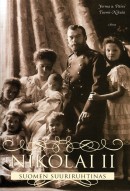 Nikolai II: Suomen suuriruhtinas
Nikolai II: Suomen suuriruhtinas
[Nicholas II: Grand Duke of Finland]
Jyväskylä: Atena, 2010. 283 p., ill.
ISBN 978-951-796-650-4
Swedish-language edition:
Nikolaj II: Storfurste av Finland
Helsingfors: Schildts, 2010
ISBN 9789515018714
€ 41, hardback
This work is the first Finnish biography of the last Grand Duke of Finland, Tsar Nicholas II (1868–1918). It provides a new approach to historical writing in its treatment of the Tsar’s relationship with Finland in the face of increasing terror, the First World War and the 1917 revolutions. Terrorism as a form of resistance during the period of oppression in 1904–07 was more widespread in Finland than previously thought. Extracts from diaries, letters and other documents provide the background to events on the global political stage as well as the private lives of the figures. Finns initially responded favourably to Nicholas’ ascent to the throne in 1894, but this trust soon declined with Nicholas’ policy of Russification. Despite these increasingly strained relations, Nicholas enjoyed spending his holidays in Finland. This book contains a wealth of photographs, including some from the personal albums of Anna Vyrubova, a lady-in-waiting who fled to Finland. There are also never-before-published postcards dating from the era of oppression and revolution. The authors have previously written about the Tsars in Finland’s era as a Grand Duchy of Russia in their book Keisarit kesälomalla Suomessa (‘The emperors on summer holiday in Finland’, 2002).
Translated by Ruth Urbom
The unmaking of Finland’s forests
17 March 2010 | Reviews
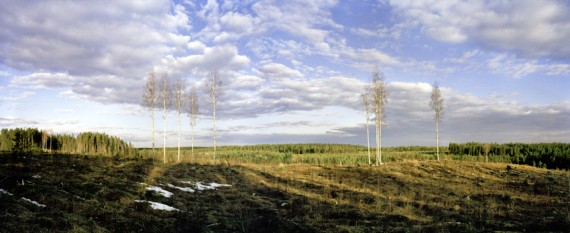
Natural landscapes? According to Metsähallitus, the government body charged with forestry, ‘the regeneration area is defined according to topography, in accordance with the landscape. Retention trees and groups of trees are always left standing in regeneration areas to enhance the landscape and to improve the survival chances of species that require old and decaying trees.’
Ritva Kovalainen & Sanni Seppo
Metsänhoidollisia toimenpiteitä
[Silvicultural operations]
Helsinki: Hiilinielu tuotanto ja Miellotar, 2009. 200 p., ill.
ISBN 978-952-99113-4-9
€ 43
Finns have a strong identity as forest people, partly because more than 95 per cent of them still speak an ancient hunter-gatherer language, Finnish, as their mother tongue. In spite of this cultural and historical background, Finland has become the world’s most eager and influential proponent of forestry models based on clear-cutting – felling all the trees in a particular area at one go and planting new trees to replace them. More…
Nationalism in war and peace
3 May 2012 | Reviews
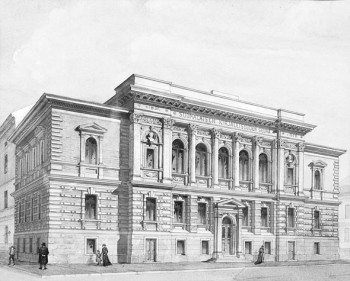
House of words: the Finnish Literature Society building in Helsinki. Architect Sebastian Gripenberg, 1890. Watercolour by an unknown Russian artist, 1890s
Kai Häggman
Sanojen talossa. Suomalaisen Kirjallisuuden Seura 1890-luvulta talvisotaan
[In the house of words. The Finnish Literature Society from the 1890s to the Winter War]
Helsinki: Suomalaisen Kirjallisuuden Seura, 2012. 582 p., ill.
ISBN 978-952-222-328-9
€54, hardback
The Finnish Literature Society has, throughout its history, played a multiplicity of roles: fiction publisher, research institute specialising in folklore studies, organiser of mass campaigns in support of national projects, literary gatekeeper, learned society, controller of language development.
The priorities of these areas of interest have changed from decade to decade, so Kai Häggman has taken on an exceptionally difficult subject to describe. He has, however, succeeded brilliantly in gathering the different threads together, using as as lowest common denominator the ideas of nationalism and nation whose role in global modernisation and European history have been studied, among others, by the British historians Ernest Gellner and Eric Hobsbawm. More…
Consume culture, live longer!
16 May 2013 | This 'n' that
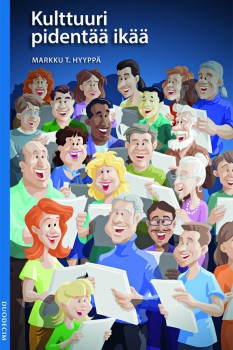 A culture freak (and you don’t have to be a vulture) will live longer than a couch potato.
A culture freak (and you don’t have to be a vulture) will live longer than a couch potato.
This sounds pretty obvious, doesn’t it? Watching TV is a passive pursuit, attending choir rehearsals or line dancing class isn’t – and human beings are designed to be active.
But it is also a scientific fact. Neurologist and writer MD Markku T. Hyyppä has been researching the effects of cultural pursuits on health for decades. In his new book Kulttuuri pidentää ikää (‘Culture prolongs your life’) he sets out to prove the power of culture using scientific evidence from many countries.
Cultural capital is a concept that defines the ‘usefulness of culture’. Hyyppä disagrees with the famous sociologist Pierre Bourdieu who defines cultural capital as a means for the upper classes to increase their personal status and power. According to Hyyppä, cultural capital is immaterial, originates from cultural pursuits and the consumption of culture, and brings benefits to all who take part.
Learning the basics of culture in one’s education is vital: Finland has done well in the international PISA exams, but it’s not just because the children are bright. Learning how to educate is important: unlike in many other countries, the arts play a significant role in teacher training in Finland. And arts subjects are important in education: art has a positive effect on emotions and cognition, on emotional life as well as reason. Study arts subjects, and it will be easier to learn maths!
It’s a fact is that those who are socially active in clubs, associations and cultural pursuits in general, live longer than those who are not. Economic status is not a decisive factor here. The efficacy of cultural pursuits and cultural capital on prolonging an individual’s life appears to be based on networking. i.e. social capital. Social capital increases the chances of staying alive – almost as much as non-smoking and much more than the estimated extra time of exercise or losing weight. An individual’s cultural pursuits allow him at least a couple of years more in old age.
Hyyppä also examines and comments on the cultural policies of Finnish political parties. After the Perussuomalaiset – True Finns – party presented its manifesto in 2011, stating that contemporary art should not receive any public funding, as only art that ‘strengthens the national identity’ should be funded, other political parties began hastily to revise and update their dusty arts programmes. As it has been proved in international and Finnish medical research that culture definitely has a positive impact on developing society as a whole, political parties cannot afford to ignore dealing with the subject.
In conclusion, Hyyppä states that Finland would certainly benefit from the cultural added value that manifests itself in well-being, health and a longer life spans. When people live longer healthy, the national economy gains massively.
It’s not just opera, ballet and favouring the paintings of the Düsseldorf school that bring you cultural capital and prolong your existence; rock concerts or pottery classes are fine, too. But, notes Hyyppä, being active in politics in your free time, going to church and participating in spectator sports don’t seem to have a similar positive effect, so might it be better not to concentrate on those alone?
Markku T. Hyyppä
Kulttuuri pidentää ikää
(‘Culture prolongs your life’)
Helsinki: Duodecim, 2013. 132 p.
ISBN 978-951-656-479-4
Round and round
2 December 2011 | Essays, Non-fiction
In this essay, Olli Löytty imagines himself in a revolving door that is able to spin his old family home and its inhabitants backwards in time – as far as prehistory. In addition to his own family’s past, Löytty zooms back into the history of the world’s great changes, for a moment playing the part of a cosmic god examining our globe
An essay from Kulttuurin sekakäyttäjät (‘Culture-users’, Teos, 2011)
If a film camera had stood outside my home from the time when it was built, I would rewind the movie it made from the end to the beginning. The story would begin with my children, one autumn morning in 2011, walking backwards home from school. The speed of the rewind would be so fast that they would quickly grow smaller; I, too, would get thinner and start smoking. I would curiously seek out the point where my wife and I are seen together for the last time, stepping out of the front door, back first, and setting out on our own paths, to live our own separate young lives.
At that time my grandmother still lives in the house with her two daughters and their husbands, and lodgers upstairs. The next time I would slow the rewind would be the point where, at the age of 18, finally move out of the house. The freeze-frame reveals a strange figure: almost like me, but not quite. In the face of the lanky youth I seek my own children’s features.
When I let the film continue its backwards story, I seek glimpses of myself as a child. Even though we lived in distant Savo [in eastern Finland], we went to see my grandmother in the city of Tampere relatively often. We called her our Pispala grandmother, although her house was located to the west of the suburb limit, in Hyhky. I follow the arrival of my grown-up cousins, their transformation into children, the juvenation of my grandmother and her daughters, the changing lodgers. At some point the film becomes black-and-white. More…


